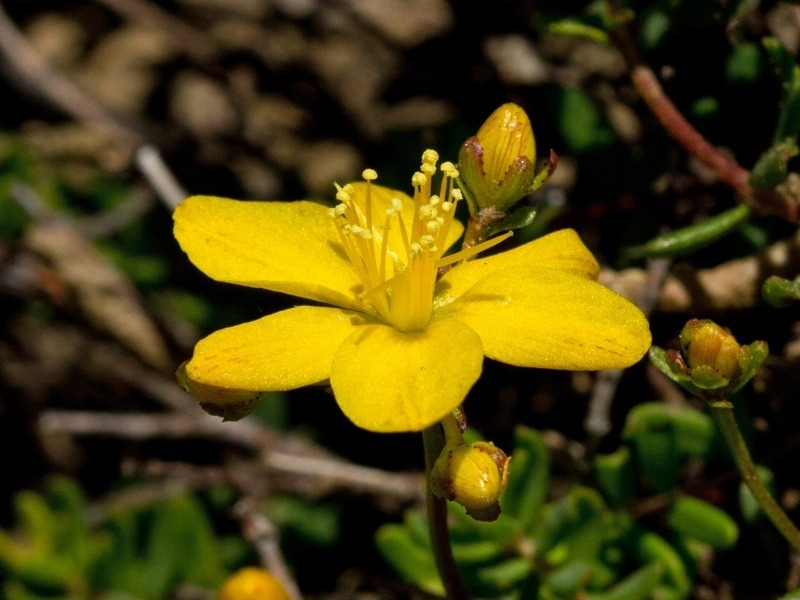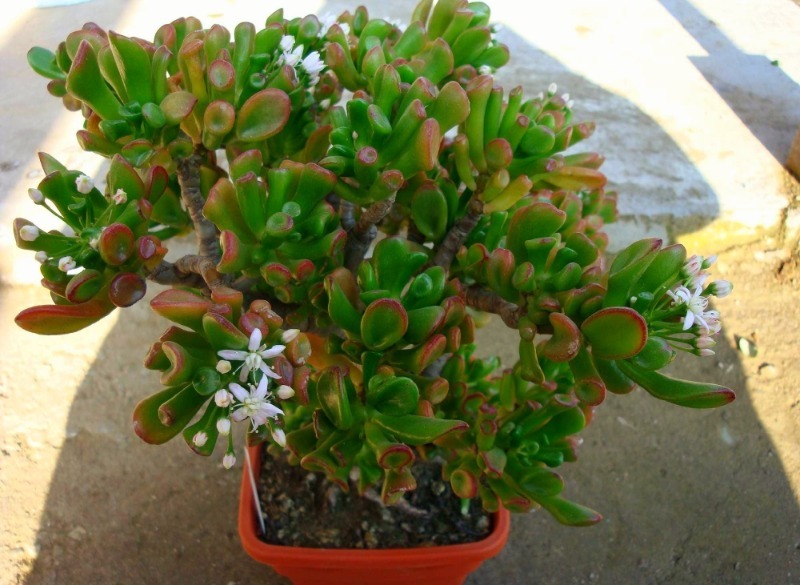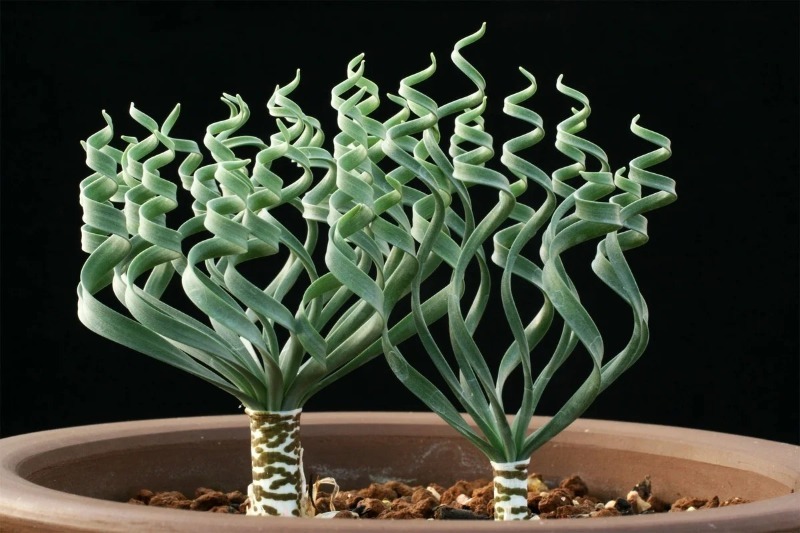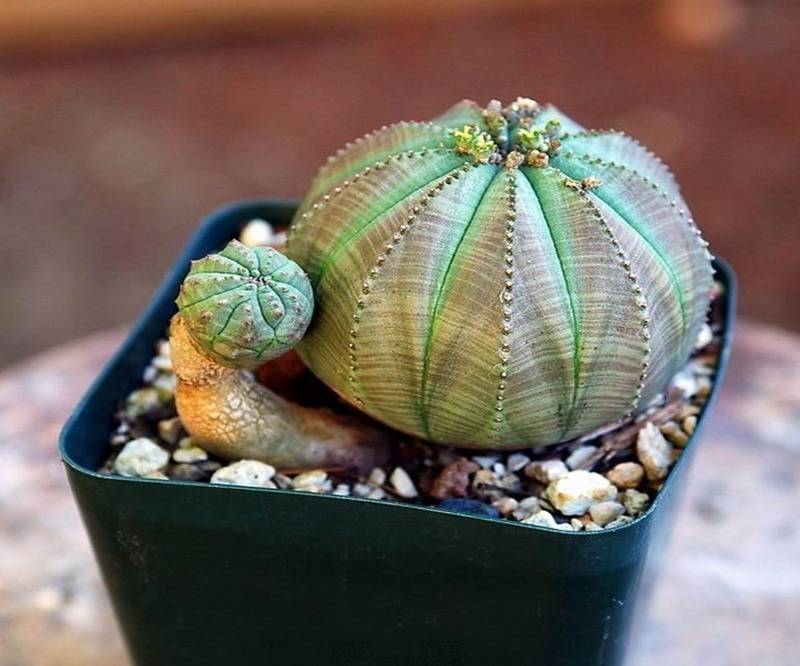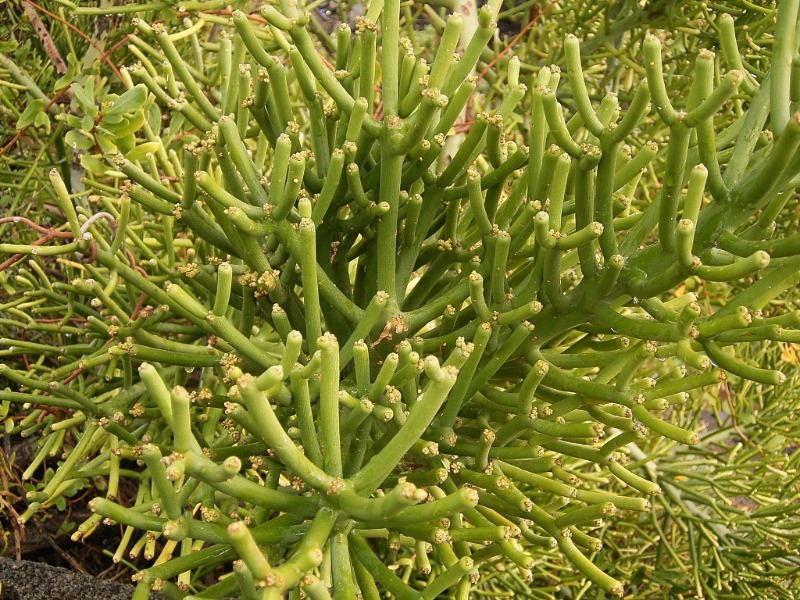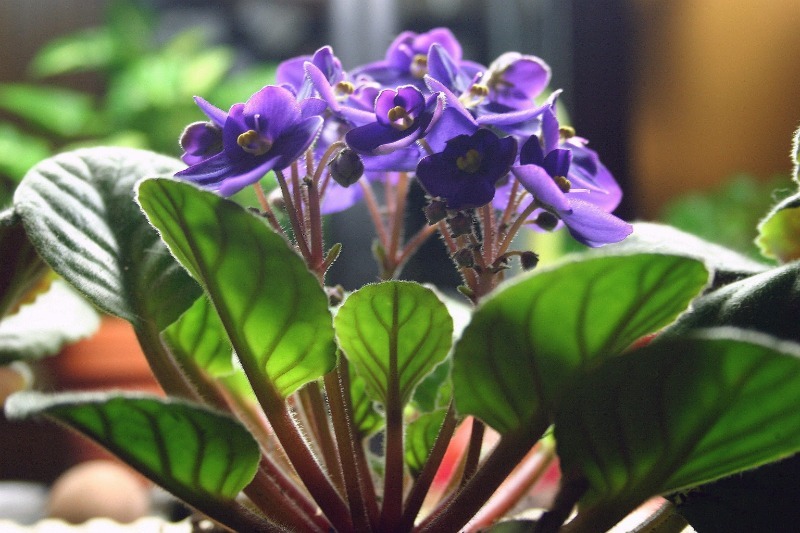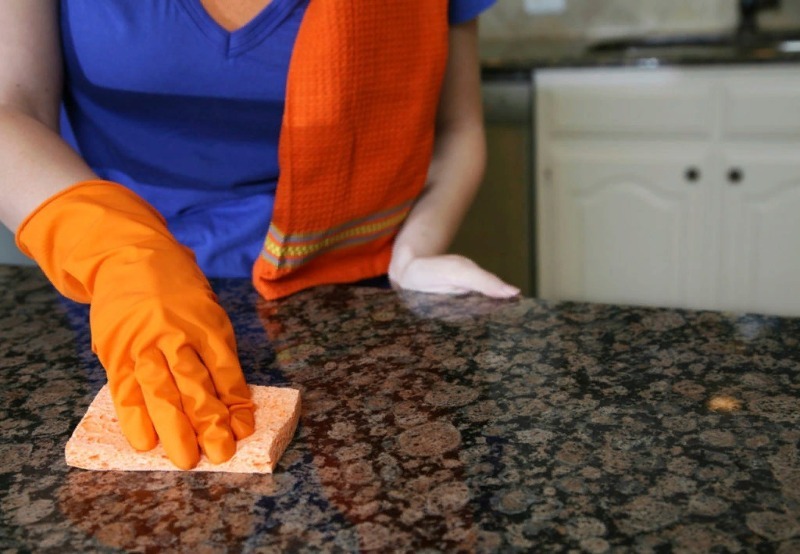7 home plants that you most likely have never seen
The variety of plants grown at home is so great that it seems there is nothing surprising. However, botanists find new species in the wild, and amateur gardeners adapt them to flower beds and window sills. Try to grow a rare plant from this list and perhaps you will become a pioneer.
African Succulent Trichocaulon
The birthplace of this unusual plant is South Africa. The species is common on the quartz rocks of western Bushman. It grows at an altitude of 800-1600 meters above sea level.
The cultivated trichocaulon is a perennial succulent stalk with a spherical body and pentagonal, flat or indented tubercles. Plant height rarely reaches 30 cm, width 20-60 mm. This species is variable, especially in the color of the flowers. The plant has a highly specialized pollination biology that depends on flies. Transferring pollen from one plant to another, the insect runs the risk of being caught by a flower.
For growing at home, you can use the soil for cacti, adding perlite or pumice as drainage. A clay pot will allow the earth to dry between watering in the summer, in winter you can not water it.
Unusual Succulent Crassula
The most famous succulent of the genus Crassul is the familiar fatty or money tree. But the family of Crassulas is so diverse that its representatives are able to amaze with beauty and form, especially the hybrid of Perforate and the Temple of Buddha. The tips of the leaves of this variety are curved upward, making the plant resemble the roof of a Chinese pagoda.
Also known are decorative flowering crassulas that can decorate a house. Caring for fat women at home is simple, these are not demanding plants. It is necessary to monitor the irrigation regime and provide drainage during planting to prevent root decay.
Plant trachiander
A perennial plant of a bizarre form, native to Africa. Green "pasta" comes out of a strong trunk, which curls from the heat into spectacular tight spirals. Very unusual and attractive.
Not so long ago, Russian florists began to cultivate trachander. To grow and care for rare succulents, knowledge and patience are needed. For planting, it is better to take a clay pot and provide drainage.
The plant does not tolerate waterlogging at all, in the summer, watering is performed no more than 1 time per week, not allowing water to remain in the pan. In winter, reduce to 1 time per month. Water quality is vital for trachander; chlorine can kill the plant. It is recommended to use settled, distilled or melt water.
Euphorbia puffy
From a variety of species of milkweed eyes just run up. There are those that bloom very beautifully, others are very similar to cacti. The juice of all milkweed is poisonous, so it is better to refrain from growing indoors if the family has children or animals.
The botanical name of milkweed puffy (or obese) is euforbia obesa. It has the most unusual shape due to an overgrown stem that looks like a ball. Small leaves fall over time. This is a small plant with a height of only 30 centimeters. At the top of the adult specimen “youngsters” “sit” - a few smaller balls.
The color of the plant varies in green shades, the most interesting is steel. Euphorbia does not need special conditions for life, it easily tolerates drought, but direct sunlight is not useful to him.
Truncate plant
The almost stemless, called “living stone” hardy plant is relatively easy to grow, which makes it ideal for amateur gardeners. They grow mainly in the winter months, in the summer the process slows down. Due to the harsh conditions that the plant is used to, it is easy to care for. It grows very well in sunny areas. At the height of summer, it is recommended to water the plant at least once a week, and keep it dry in the winter months.
Trunkata prefers soil that is drained with a little organic fertilizer. A permeable substrate can be added along with gravel and sand in order to improve drainage. Propagated by seeds that are sown in early spring.
Pencil cactus
Strictly speaking, this is not a cactus, but a succulent. Interesting and beautiful sticks have an attractive shade of green for most of the year and turn yellow, orange or red in the cooler months.
The home plant should be watered weekly during the growing season. Take care to provide drained soil and openings in the container to avoid root rot. In the cold season, watered once a month. Plants with toxic sap are resistant to pests.
Plant Thoroughlin Rowley
If you are looking for a hassle-free succulent for growing in an apartment, opt for a “string of pearls”. Hanging along the edges of containers or hanging baskets, the plant resembles a bead with fleshy green, pea-like foliage.
The creeping succulent looks unusual and original. Like most of these plants, the Rowley godson does not require special care, is drought tolerant, and easily survives periods without water. Moisten the soil 2-3 times a month, in winter, reduce watering to once.
The plant sometimes needs pruning to maintain its size or appearance. Remove dead stems and those that have lost a lot of "beads." Pruning will give the plant a decorative look.

